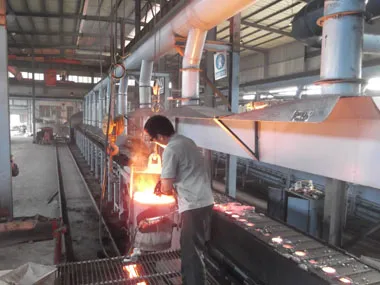Mobile:+86-311-808-126-83
Email:info@ydcastings.com
pump diffuser and impeller
Understanding Pump Diffusers and Impellers A Key to Efficient Fluid Dynamics
In the realm of fluid dynamics, particularly in pumping systems, two crucial components that significantly influence efficiency and performance are the diffuser and the impeller. Understanding how these elements work together can help engineers and designers optimize hydraulic systems for a variety of applications, from industrial machinery to municipal water supply systems.
The Role of the Impeller
The impeller is the heart of a centrifugal pump. It is typically a rotating component designed to increase the velocity of the fluid as it passes through. Impellers come in various designs and geometries, each suited for specific types of fluids and operational conditions. The basic function of the impeller is to convert mechanical energy from the pump motor into kinetic energy of the fluid, thereby causing it to flow.
Impellers can be classified into two main categories open and closed. Open impellers are designed with blades that do not enclose the flow path, allowing for easy cleaning and handling of fibrous or solid-laden fluids. Closed impellers, on the other hand, have blades that are enclosed between two shrouds, providing higher efficiency and better performance for clearer fluids. The choice of impeller design can significantly impact the pump’s efficiency, flow rate, and pressure generation capabilities.
The Function of the Diffuser
After the fluid exits the impeller, it enters the diffuser, which plays a critical role in converting kinetic energy into pressure energy. The diffuser is typically a stationary component characterized by a varying cross-sectional area that slows down the flow of the fluid. As the fluid slows down, its velocity decreases, and the pressure increases, following the principle of conservation of energy in fluid dynamics.
pump diffuser and impeller

The design of the diffuser is crucial for ensuring smooth transitions of fluid flow and minimizing turbulence, which can lead to energy losses. A well-designed diffuser maximizes the efficiency of the pump by allowing for optimal energy conversion and reducing the likelihood of cavitation—a phenomenon where vapor bubbles form due to low pressure and can cause significant damage to pump components.
The Synergy between Impeller and Diffuser
The interaction between the impeller and the diffuser is paramount in determining the overall performance of the pumping system. An imbalance between these components can lead to inefficiencies, such as reduced flow rates, increased energy consumption, or accelerated wear and tear. Engineers must carefully consider factors such as the impeller tip speed, the geometry of the diffuser, and the characteristics of the fluid being pumped when designing or selecting a pump.
The coordination of the impeller and diffuser can also influence the NPSH (Net Positive Suction Head) required for the pump to operate effectively. It is essential to ensure that the pump operates within its designed parameters to prevent cavitation and ensure longevity and reliability.
Conclusion
In conclusion, the diffuser and impeller are integral components of centrifugal pumps, working hand in hand to enhance fluid dynamics. The impeller’s role in increasing fluid velocity and the diffuser’s function in converting that velocity into pressure are critical to the efficiency and effectiveness of pumping systems. By understanding the design intricacies and operational principles of these components, engineers can develop more efficient, durable, and reliable pumping solutions.
This understanding not only benefits the design and operation of various hydraulic systems but also contributes to the overall sustainability of fluid transport. As industries continue to seek ways to optimize their processes and reduce energy consumption, the strategic design of impellers and diffusers will remain a focal point in engineering innovation. Emphasizing efficiency in these components can lead to significant reductions in operational costs and environmental impact, paving the way for a more efficient and sustainable future in fluid management systems.
-
Why Should You Invest in Superior Pump Castings for Your Equipment?NewsJun.09,2025
-
Unlock Performance Potential with Stainless Impellers and Aluminum End CapsNewsJun.09,2025
-
Revolutionize Your Machinery with Superior Cast Iron and Aluminum ComponentsNewsJun.09,2025
-
Revolutionize Fluid Dynamics with Premium Pump ComponentsNewsJun.09,2025
-
Optimizing Industrial Systems with Essential Valve ComponentsNewsJun.09,2025
-
Elevate Grid Efficiency with High-Precision Power CastingsNewsJun.09,2025











